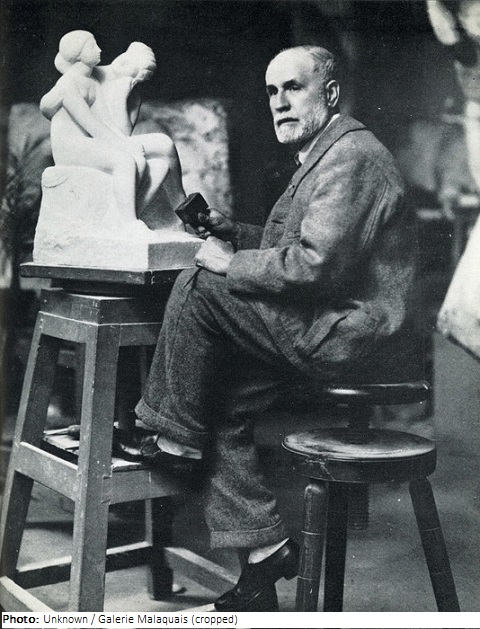
| Roles | Referee |
|---|---|
| Sex | Male |
| Full name | Joseph Antoine•Bernard |
| Used name | Joseph•Bernard |
| Born | 17 January 1866 in Vienne, Isère (FRA) |
| Died | 7 January 1931 (aged 64 years 11 months 21 days) in Boulogne-Billancourt, Hauts-de-Seine (FRA) |
| NOC |  France France |
The sculptor and draftsman Joseph Bernard first learned the stonemason’s trade from his father. From 1881-91 he studied first for five years in Lyon and then at the École des Beaux-Arts in Paris. In 1892, he exhibited for the first time at the Paris Salon des Artistes Français works influenced by Auguste Rodin (1840-1917).
In the following years, Bernard developed a personal style with sculptures directly carved in stone and approached Symbolism. Despite a first, highly acclaimed solo exhibition in Paris in 1908, he had to work nights in a print shop to earn a living until 1912. From 1910, he exhibited regularly at the Salon d’Automne. Subsequently, he started producing large plaster figures intended for casting in bronze. In 1912/13 he created the marble work Frise de la danse.
In 1913, Bernard was paralyzed one-sidedly by a stroke. At a major solo exhibition in 1914, his major works were shown, including the Grande Bacchante (stone). Because of his poor health, he produced mainly drawings during the next few years. He finally gave up his studio in Paris in 1921, destroyed a large part of his previous works, and settled in Boulogne-Billancourt. Until his death, he worked there in the garden studio of his house, producing new works in stone and continuing to publish his works in bronze.
In 1921-31, Bernard participated in the exhibitions of the movement “La Douce France”. He was commissioned by the French state to produce a remodeled larger version of Frise de la danse for the 1925 Exposition Internationale des Arts décoratifs in Paris. Weakened by his illness, he began making studies in plasticine in 1928-30 and continued to work on a Victoire, for which he had been making studies since 1909. In 1929-30 he painted a series of watercolors for the illustration of a bibliophile edition of “L’âme et la danse” (Soul and Dance) by Paul Valéry, which was published posthumously.
As a pioneer of the return to direct carving of stone, Bernard exerted a great influence on a whole generation of sculptors, without having had any pupils of his own. In his time he was considered by critics together with Antoine Bourdelle and Aristide Maillol as the main representative of the generation after Rodin.
In 1913, Bernard was made a Knight of the Legion of Honor. His only son Jean (1908-1994) was an all-around artist: writer, stonemason, sculptor, and painter. Together with a niece of Pierre de Coubertin, Jean-Bernard founded the “Fondation de Coubertin”.
| Games | Sport (Discipline) / Event | NOC / Team | Phase | Unit | Role | As | |
|---|---|---|---|---|---|---|---|
| 1924 Summer Olympics | Art Competitions |  FRA FRA |
Joseph Bernard | ||||
| Sculpturing, Open (Olympic) | Final Standings | Judge |